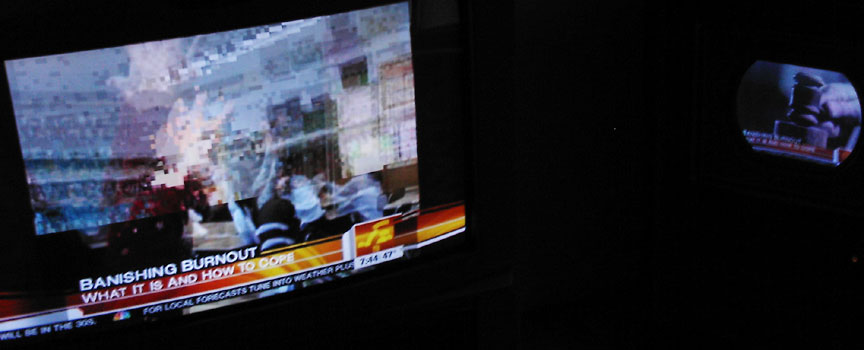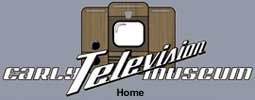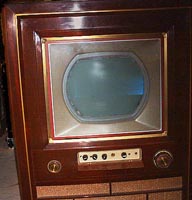The hi-def set on the left is tuned to receive a show in high definition. 
A diminutive 54-year-old analog set on the right is receiving the same program in its native analog domain.
These two television sets are reproducing the NBC "TODAY" show on the morning of December 26, 2006.
A common antenna, an amplified antenna, is correctly feeding both sets. Notice about two-thirds of the ATSC image is pixelized. Notice the NTSC signal is not. Therein lies the problem. A strong signal for one set doesn't automatically translate to adequate signal strength for the other. This is a major NYC station... a flagship station. Yet the ATSC signal is marginal. It is a condition that is neither universal nor unusual: Some major ATSC signals are always available, while others, such as this example, are not. It's definitely a problem. Shut down NTSC in 2009 without making this problem go away, and there will be a bunch other disappointed viewers like me. Some will say, "You just need a better antenna." You miss my point. I already have a good antenna. Witness the solid, noiseless analog picture. For whatever reason, the ATSC reception pales in comparison. It's definitely a problem. But there's another half. With NTSC you nearly never lose the FM sound no matter how snowy or full of confetti the image may be. With ATSC the digital sound pops in and out like an intermittent audio cable trying to maintain continuity. It's really nerve-racking. |

